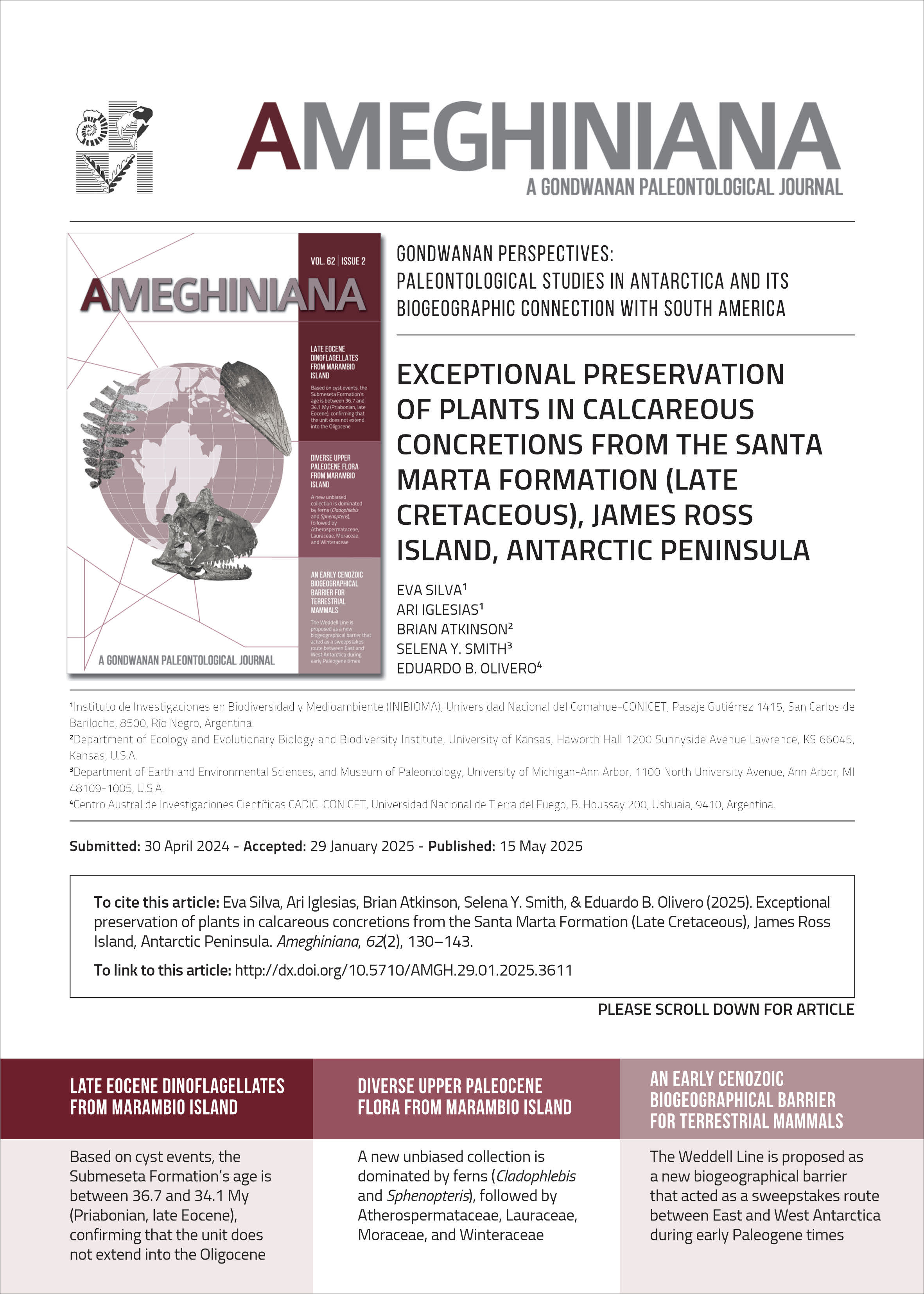EXCEPTIONAL PRESERVATION OF PLANTS IN CALCAREOUS CONCRETIONS FROM THE SANTA MARTA FORMATION (LATE CRETACEOUS), JAMES ROSS ISLAND, ANTARCTIC PENINSULA
DOI:
https://doi.org/10.5710/AMGH.29.01.2025.3611Keywords:
Fossil Plants, Concretion, AnatomyBeta Member, AntarcticaAbstract
Nowadays, the polar desert of the Antarctic continent preserves a diverse Late Cretaceous terrestrial biota in the James Ross Basin. Within the upper section of the Santa Marta Formation (Santonian–middle Campanian; Chron C33n, ~80 Ma), the Sitio Feliz locality preserves abundant permineralized plant remains in calcareous marine concretions. In this work, we provide the first taphonomic consideration of this concretionary material and illustrate the exceptional preservation of vegetative and reproductive plant organs in order to emphasize the quality of preservation of the new fossils that will permit full anatomical descriptions. Based on the presence of massive bioclast sediment, microframboids and framboids of pyrite, and fine microcrystalline calcite cement without dissolution or recrystallization evidence, we conclude that a rapid burial event and very early calcareous precipitation prevented bacterial decomposition in plant tissues and subsequent pyritization, as well as possible later bioturbation and compaction of the sediments. These conditions permitted the exceptional preservation of plant organs like the presence of delicate vascular and mesophyll cells, as well as various reproductive structures such as fruits and seeds with carpels and seed coats. Although concretionary levels within the Santa Marta Formation are common, the type of concretion described herein demonstrates a distinctive preservation, unlike other concretions described from the unit. The exceptional fossilization offers a rare opportunity to reconstruct the Antarctic continental floras in a much more complete approach than other types of paleobotanical remains.

Downloads
Published
Issue
Section
License
Authors publishing in Ameghiniana have the option of making their article freely available online. Authors opting for the Open Access must pay a fee of $300 (US dollars) to cover article-processing costs and to ensure the article is made open access. Please contact the Production Team after the acceptance of your manuscript if you are interested in making your article Open Access. This option implies by default a license Creative Commons Attribution Non-Commercial-NoDerivs License (CC BY NC ND). If your funding institution requires a different licensing option please communicate this to the Production Team after the acceptance of your manusctipt.










